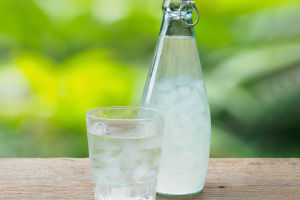In modern society, people are exposed to more and more clothing materials, and some special fabrics have different requirements for the choice of detergents and laundry methods. So now there are more types of detergents on the market, and many special detergents appear.
Some of the knowledge mentioned below can help you understand and choose detergents, and avoid damage to clothes caused by improper selection of detergents.
1. Choose water-soluble.
Detergents can be divided into neutral and weak alkaline. Synthetic fiber clothing can choose weak alkaline detergent, but it is easy to destroy the elasticity and softness of the fiber.
The ingredients of silk and wool fabrics are natural, and because they are rich in protein, they are not resistant to alkalis. Neutral detergents or silk-specific detergents should be used for such fabrics, and enzyme-containing detergents should not be used.
Wool and silk fabrics are naturally easily damaged, with a mild pH value, and a laundry detergent that can soften and fluff at the same time is the best choice.
At present, the detergents on the market can be divided into two categories: natural oil soaps and synthetic detergents made of petroleum. Natural soaps are mostly solid and powdery, with a partial texture and not easily soluble in water, which is prone to residues, which will harden and turn yellowish clothes. The petrochemical detergents are weak alkaline and neutral, and they are the most common detergents at present.
2. Whether it contains fluorescent agent.
When washing white clothes, we can use detergents containing fluorescent agents, which can remove yellow spots and dark spots on clothes and make clothes white.
However, bright-colored, light-colored clothes cannot use detergents containing fluorescent agents, otherwise the clothes may be discolored.
3. Whether to add enzymes.
When the clothes are heavily stained, you can use an enzyme-added detergent. Soak the clothes in the detergent before washing, which can strengthen the cleaning effect.
However, the enzymatic detergent cannot be used together with the chlorine bleach series, otherwise the effect of the enzyme will be weakened.
4. Bleach.
Bleaching agents are divided into oxidizing and reducing types, and oxidizing agents are further divided into salts and acids. The salt bleaching agent has strong bleaching power, and has good sterilization and deodorization effects. It is suitable for bleaching clothes, but it cannot be used for colored clothes.
Acid-based bleach has milder bleaching power and is safe to use on colored garments, as well as silk and wool.
5. Softener.
It can prevent the entanglement and breakage of clothing fibers during the washing process. After fabrics treated with softener, the fibers can be restored to their original shape, and the wrinkles on the fabrics are also significantly reduced.
Softeners make worn-out clothing feel soft and smooth to the touch. For chemical fiber clothing, it has the effect of preventing static electricity and reducing hairballs.
Washing powder has strong decontamination power and low price, but it also causes great damage to fabrics. Therefore, clothes such as coats, jeans, sheets, sofa covers, etc. that are exposed to more dust, such as cotton and linen, have certain alkali resistance and can also use the washing powder.
Close-fitting, small items such as baby clothes and underwear have the most contact with the skin, so soap powders that are natural and have a protective effect on the fabric work best.


